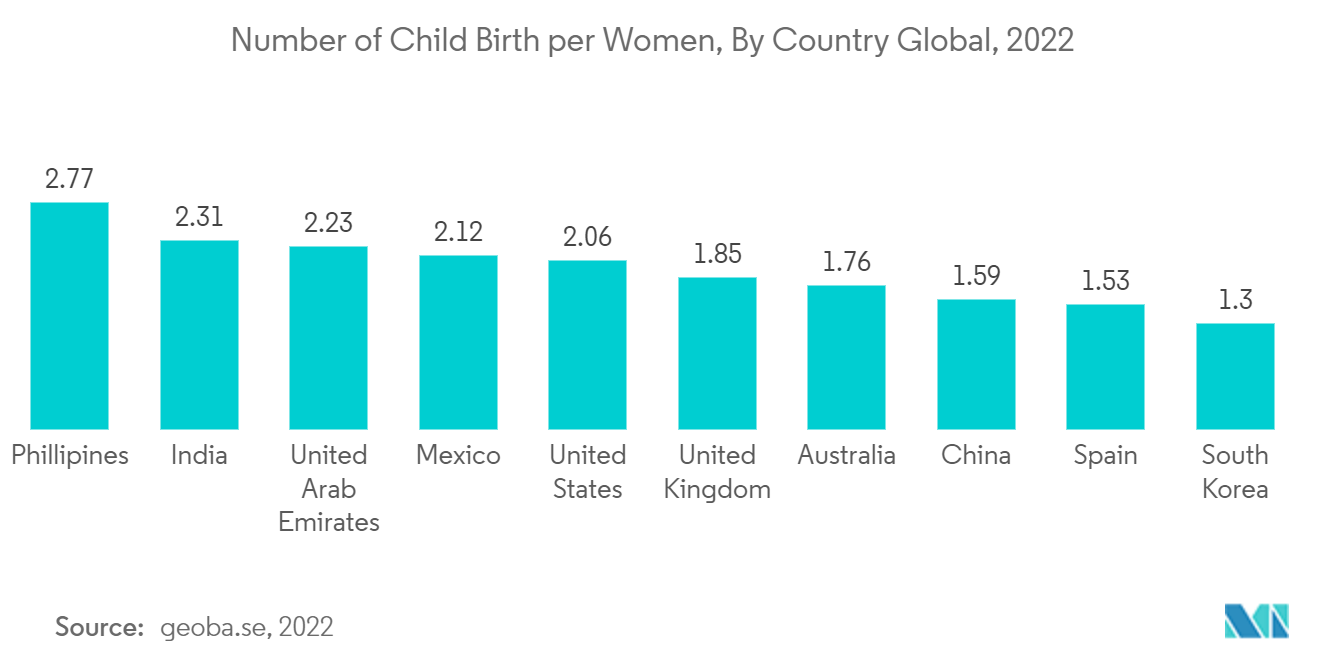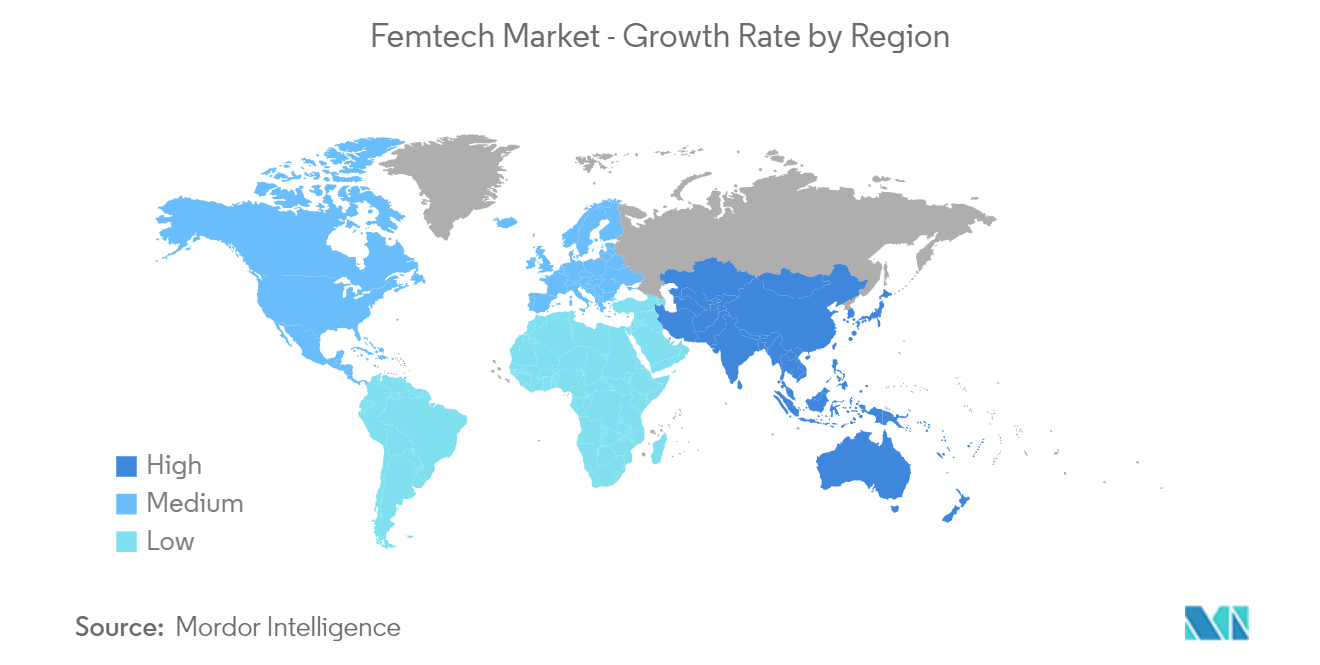Market Trends of Femtech Industry
This section covers the major market trends shaping the Femtech Market according to our research experts:
Reproductive Health Segment is Expected to Hold a Significant Share of the Market
There is a current trend among women to become pregnant at a later age owing to an increased focus on careers and late marriage. Many factors, such as the older age of women and environmental factors, contribute to an increase in the number of women experiencing trouble before, during, or after pregnancy, and therefore the demand for femtech solutions for reproductive health is expected to grow.
The reproduction health and infertility FAQs reviewed in April 2021 by CDC, globally, about 35% of couples suffer from infertility yearly. In addition, according to the data updated by the Government of the Philippines in November 2022, the total fertility rate (TFR) of Filipino women aged 15 to 49 years declined to 1.7 children per urban woman and 2.2 children in rural women in 2022 from the past decade. Hence, the Philippines is already below the replacement fertility level of 2.1 children per woman. These incidences of infertility among men and women are increasing the demand for Femtech services, products, and applications among end users is increasing. Hence, it is expected to propel the segment growth during the forecast period.
Furthermore, the increase in investment toward reproductive health-related apps and devices and initiatives taken by major governments worldwide is also expected to propel the segment growth. For instance, in June 2022, companies in Japan introduced 'Femtech' or 'Female technology,' under which attention is being paid to the health of female employees. This initiative was undertaken by the Ministry of Economy, Trade, and Industry in Japan. Such initiatives are expected to drive segmental growth. Thus, owing to the factors such as increasing infertility among women and product developments, the segment is predicted to witness growth during the analysis period.

North America Expected to Hold Significant Share of the Market Studied
North America is anticipated to hold a significant share over the forecast period owing to the rising prevalence of chronic diseases among women, increasing infertility, and growing awareness about femtech products and services among the target population in the region.
Due to the high prevalence of cancer among women, rising incidence of lifestyle-related disorders, and high adoption of technologically advanced products, the market for femtech is growing in the United States, among other countries in the region. The Women's health data reviewed in January 2022 by CDC shows that in the United States, 12.7% of women of age 18 or more currently smoke a cigarette, 41.8% of women of age 20 and over are obese, and 45.2% have hypertension. As these factors are correlated with female infertility, most of the population in the region is now inclined toward femtech products and services to overcome infertility. Hence, it is expected to drive the market's growth in the country.
The presence of better healthcare infrastructure, growing awareness about women's health disorders, and increased participation by women in the workforce are poised to positively influence the regional market's growth. The increase in the investments among femtech companies based in the North American region will help to boost the market growth in the region. For instance, in August 2022, a United States-based femtech startup scored USD 3.2 million in seed funding in a round led by Thiel Capital with a fitness and wellness pitch that aims to connect women to the hormonal phases of their menstrual cycle for physical and emotional gain. In addition, in April 2022, a femtech startup, Conceive, received USD 3.7 million in funding that would be used for its outcomes-oriented fertility solution. Such investments would help to propel the market demand in the region.
Thus, the rising incidence of chronic diseases and the presence of key players are increasing the demand for femtech products and services in North America, and the region is expected to hold a significant market share during the analysis period.


